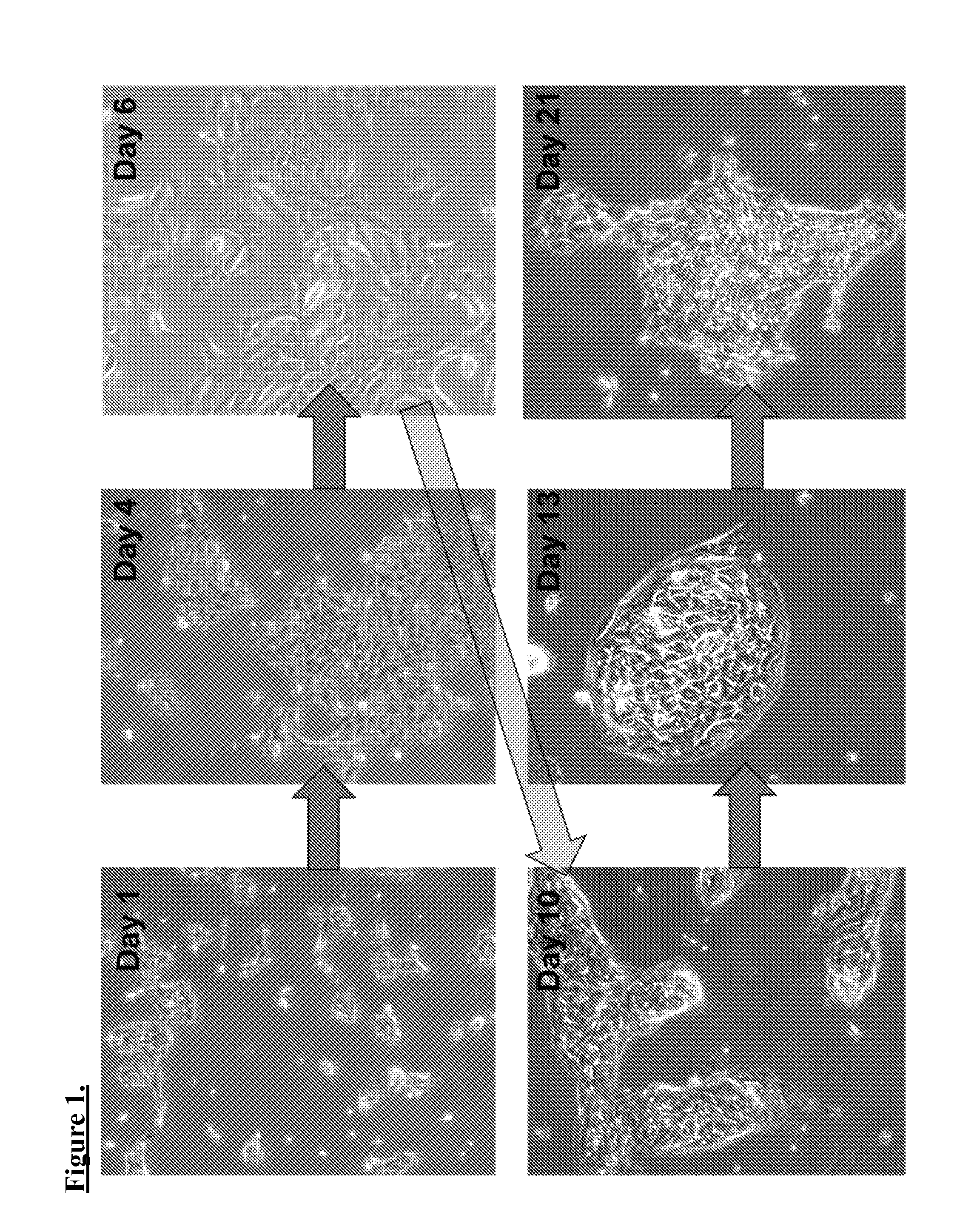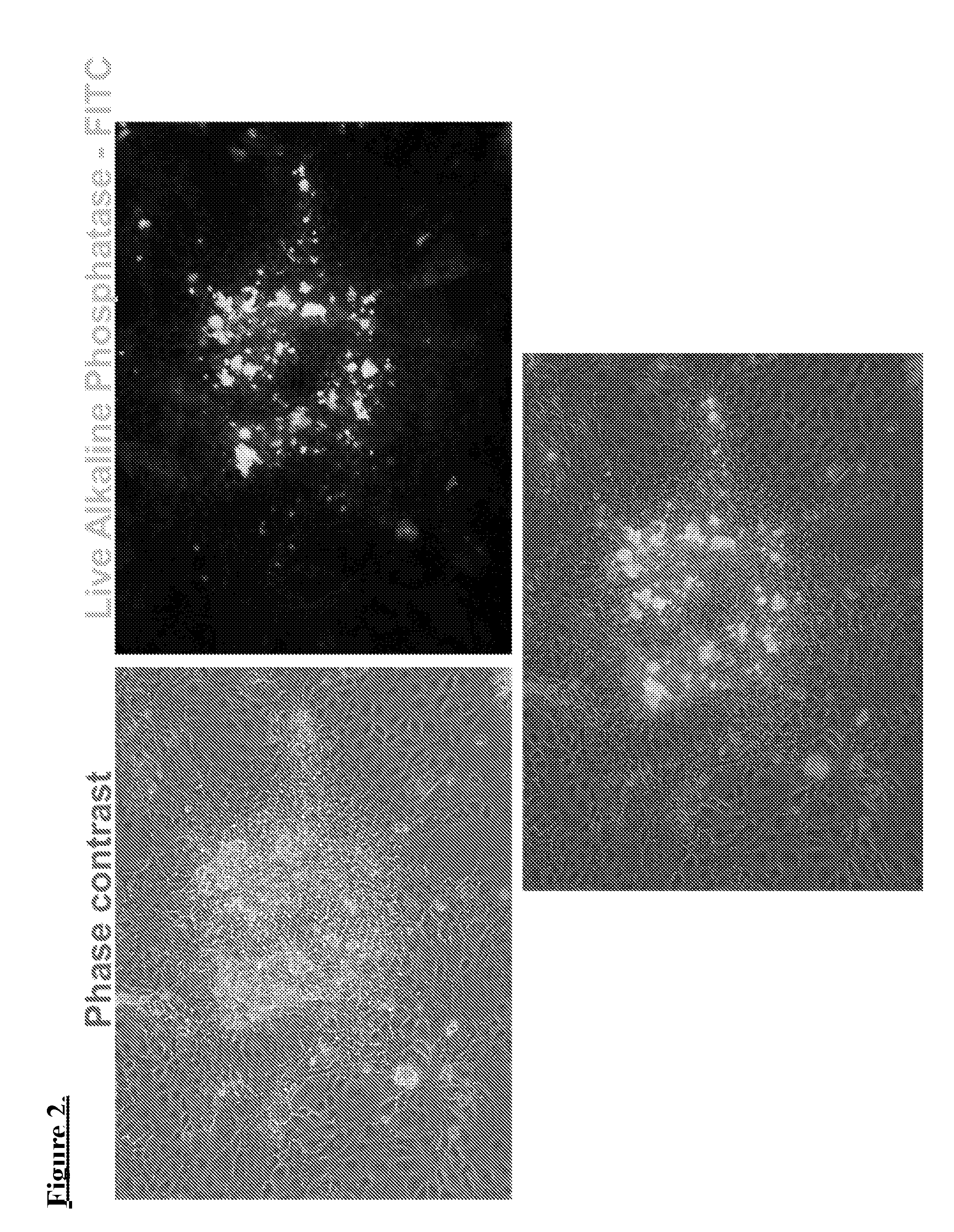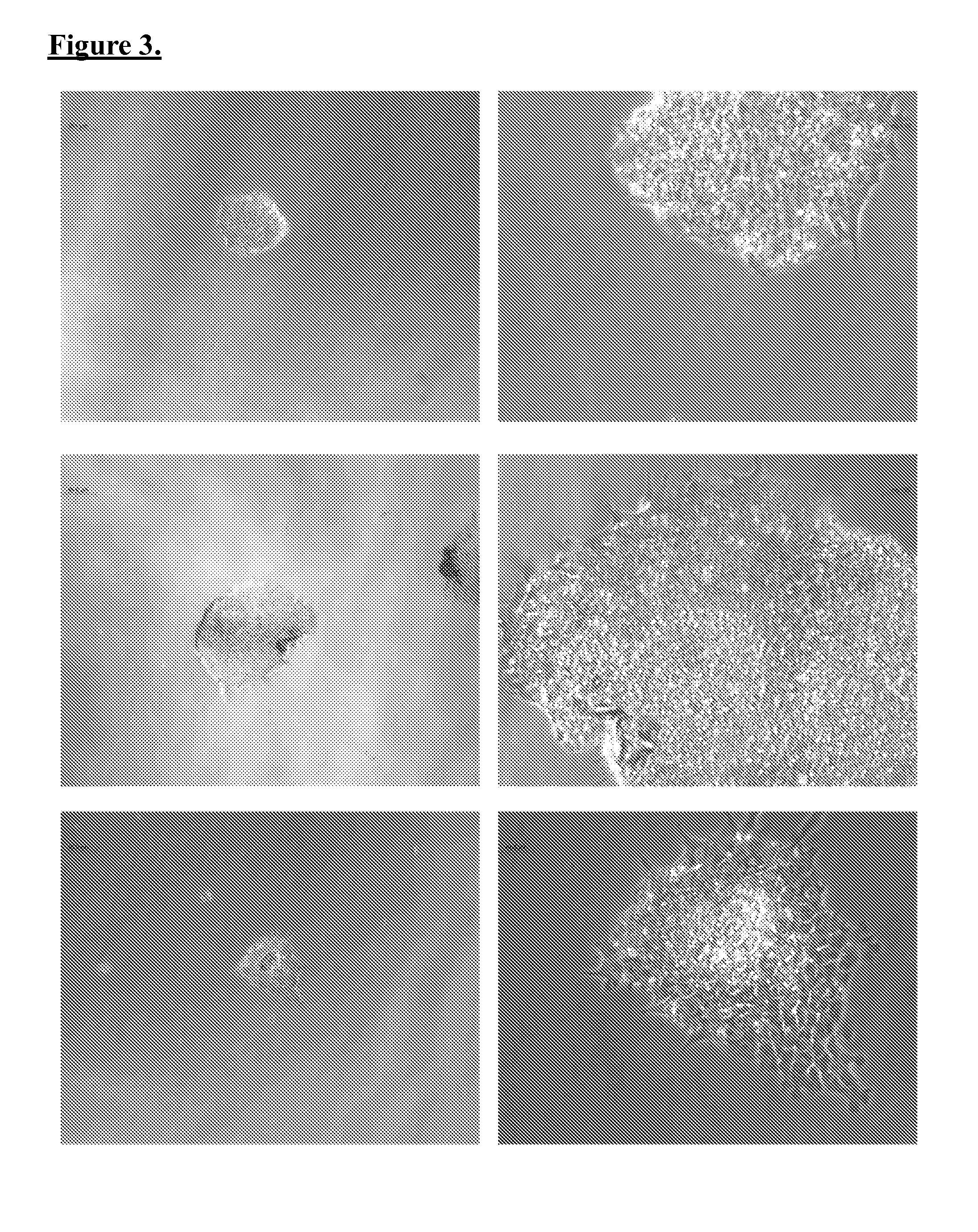Generation of induced pluripotent stem cells from normal human mammary epithelial cells
a technology of mammary epithelial cells and stem cells, which is applied in the field of pluripotent stem cells derived from mammary tissue, can solve the problems of difficult to ascertain the picture, the elusive identification of mammary cscs (“macscs”) in the specific context of breast cancer, and the cellular origin of cscs remains highly obscured
- Summary
- Abstract
- Description
- Claims
- Application Information
AI Technical Summary
Benefits of technology
Problems solved by technology
Method used
Image
Examples
example 1
Generation of Human Mammary Epithelial Cell-Derived iPSCs Using Episomal Plasmids
[0049]Generally, the inventors adapted reported iPSCs reprogramming techniques to produce mammary-derived iPSCs (“m-iPSCs”). Certain modifications include, for example, nucleofection of a specific 5 plasmid combination each encoding one or more specific reprogramming factors, and modified “3i” pluripotency media to establish the reprogrammed m-iPSC cultures.
[0050]Briefly, reprogramming of the HMECs was achieved by plasmid nucleofection of oriP / EBNA1 based pCXLE-hUL, pCXLE-hSK, pCXLE-hOCT3 / 4-shp53-F, and pEP4 EO2S T2K plasmid vectors. Unlike viral transduction, these genes do not integrate and are instead expressed episomally (extrachromosomal) in a transient fashion. After nucleofection, cells were plated on BD Matrigel coated dishes, fed with Mammary Epithelium Basal / myoepithelial Medium (“MEBM”), and maintained under norm-oxygen conditions (5% O2) during reprogramming. Subsequently, small molecules we...
example 2
Nucleofection Using Non-Integrating Episomal Vectors
[0051]Human mammary epithelial cells (HMECs, obtained from ATCC) were cultured in MEBM in a T-75 flask until cells reached approximately 90% confluence. Reprogramming of the HMECs was achieved by plasmid nucleofection, performed using oriP / EBNA1 based pCXLE-hUL, pCXLE-hSK, pCXLE-hOCT3 / 4-shp53-F, and pEP4 EO2S T2K plasmid vectors (Addgene). Amaxa Human Dermal Fibroblast Nucleofector Kit was utilized to make the virus-free iPSC lines. This method has a significant advantage over viral transduction, because genes do not integrate and are instead expressed episomally (extrachromosomal) in a transient fashion. Briefly, HMECs (1×106 cells per nucleofection) were harvested and centrifuged at 200 g for 5 minutes. The cell pellet was re-suspended carefully in Nucleofector Solution (VPD-1001, Lonza) and combined with episomal plasmids (1.5 μg per plasmid) expressing, Oct4, Sox 2, Klf4, c-Myc, Lin28, SV40LT and p53 shRNA. The cell / DNA suspens...
example 3
Induction of Stem Cell Pluripotency
[0052]Immediately after nucleofection, cells were plated on BD Matrigel coated dishes and fed with MEBM. All cultures were be maintained under norm-oxygen conditions (5% O2) during reprogramming, which further enhances the efficiency of iPS cell generation. The media was kept on for 48 h and gradually changed to reprogramming media consisting of DMEM / F12, 1% Glutamax, 1% NEAA, 1% N2, 2% B27, 1% antibiotic-antifungal, 0.1 mM beta-mercaptoethanol, 100 ng / mL basic fibroblast growth factor (bFGF), and 1000 units / mL human Leukemia Inhibitory Factor (hLIF). In addition, small molecules were supplemented in the RM to enhance reprogramming efficiency. The small molecules used were, 1) HA-100 (10 μM), 2) glycogen synthase kinase 3β inhibitor of the Wnt / β-catenin signaling pathway (CHIR99021, 3 μM), 3) MEK pathway inhibitor (PD 0325901, 0.5 μM), 4) Selective inhibitor of TGF-β type I receptor ALK5 kinase, type I activin / nodal receptor ALK4 and type I nodal r...
PUM
| Property | Measurement | Unit |
|---|---|---|
| volume | aaaaa | aaaaa |
| concentrations | aaaaa | aaaaa |
| concentrations | aaaaa | aaaaa |
Abstract
Description
Claims
Application Information
 Login to View More
Login to View More - R&D
- Intellectual Property
- Life Sciences
- Materials
- Tech Scout
- Unparalleled Data Quality
- Higher Quality Content
- 60% Fewer Hallucinations
Browse by: Latest US Patents, China's latest patents, Technical Efficacy Thesaurus, Application Domain, Technology Topic, Popular Technical Reports.
© 2025 PatSnap. All rights reserved.Legal|Privacy policy|Modern Slavery Act Transparency Statement|Sitemap|About US| Contact US: help@patsnap.com



